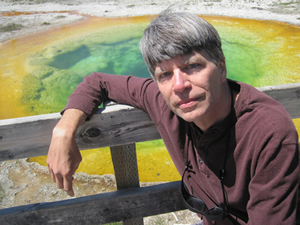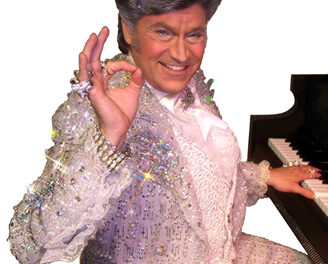The opening pair of concerts of “September Prelude,” the first Triangle-wide chamber music festival, had been eagerly anticipated. Originating from an idea suggested by UNC-Chapel Hill violinist Richard Luby, it involved the close co-operation of three chamber music presenters – the Raleigh Chamber Music Guild, Duke Performances/Chamber Arts Society, and Chapel Hill’s William S. Newman Artists series. The festival encompassed an intense residency involving a community music school, a magnet school of the arts, and amateur adult players sandwiched around two concerts. Audience development and encouragement of audience crossover among the three series were also goals.
The Miró String Quartet exactly matches the festival’s goal of showcasing a young, nationally-recognized emerging ensemble. They had just burst on the scene nationally in November, 2002, when the RCMG presented them in a concert that inaugurated a wonderful matched set of instruments made by French luthier Frank Ravatin, a gift of RCMG Board Member Mark Furth. That concert “wowed” this critic.
The September 10 concert in Duke University’s Reynolds Industries Theater opened with Beethoven’s Fifth String Quartet in A major, Op. 18 No 5. This quartet is modeled upon the K.464 quartet of Mozart on several levels. First violinist Daniel Ching’s sweet tone in the opening bars was immediately striking. All the players bowed remarkably, displaying crisp and clear articulation. Phrasing among the players was exactly matched, and the duets between second violinist Sandy Yamamoto and violist John C. A. Largess were a constant delight. The second movement features an amusing “organ-grinder” or bagpipe-like episode with a stressed beat to which the Miró gave a fine, rustic quality. The imitative counterpoint, just before the movement’s conclusion, came off very well. Most winning was the slow movement, with its delectable variations, brought off by the ensemble with elegant simplicity. The last movement has an episode in which the violins suggest bird-like calls that reminded me of Messiaen. The hairpin dynamic changes were exciting.
The centennial of Dvorák’s death is bringing a flurry of performances of his works. His Piano Quintet in A, Op. 81, dates from 1887, when the composer had renewed his interest in Czech national music. Like his “American” String Quartet, it has not suffered from programming neglect. Its sunny melodies and lively dance rhythms – the dumka in the second movement, the furiant in the third, and the polka in the finale – have made it one of the most popular piano quintets. I cannot recall a bad performance of it, but more than a few have suffered stretches in which the piano has covered the string sound. The Miró players displayed all the virtues cited in connection with the Beethoven, above, with even more refined rhythms. UNC-based pianist Mayron Tsong turned in what was possibly the best-balanced performance of this work I have heard. With the piano lid fully raised, she brought out as wide a palette as could be desired without ever coming close to covering her colleagues. The Miró players employ subtle dynamic choices and cultivate a quiet mezzo-forte, thereby making their “pp” and “ff” all the more telling.
The Miró players used all of their considerable virtuosity to make the strongest possible case for Philip Glass’ Quartet No. 5 (1991), and they certainly deserved the standing ovation given by a substantial scattering of younger audience members. The entire five-movement work is built from a brief tone, a very quiet violin pizzicato followed “a shimmering leap up through the instruments.” The five movements are played without pause. There seemed to be a slowing of pulse near the transitions but I still missed the shift between the syncopated second movement and the scherzo-like third. The second movement featured what seemed to be an imitation of train sounds like those in bluegrass classics. Surprisingly for Glass, the slow fourth movement featured long melodies for the cello and the other strings, to a lesser degree. Try as I may, I cannot force myself to work up much enthusiasm for Glass’ busy repetitiveness. About too many of his works it can be said that never has nearly nothing said so little for so long. The only Glass work I really like is “Mad Rush” (1979), a piece for organ that lasts about nine minutes. The Fifth String Quartet would benefit from a 20% trim. I understand the structural need for the fifth movement but by that point my patience and interest had flagged considerably.
The second “September Prelude” program, given in Raleigh’s Long View Center on September 12, benefited from the selection of rarely-played Dvorák works. The acoustics of the former Baptist church seemed to add a warm glow to the sound of the Miró Quartet’s matched Ravatin string instruments. The players brought out the light, almost diaphanous quality of the composer’s String Quartet No. 10, in E-flat, Op. 51. Their tight ensemble remained a delight and marvel to hear and watch.
No doubt this was a dream program for violists. The Op. 51 Quartet features some lovely writing for the instrument. The pleasure is doubled in the too-seldom heard Quintet in E-flat, Op. 97. Like the “New World” Symphony and the nearly ubiquitous “American” String Quartet, this quintet was composed while Dvorák was teaching at the short-lived National Conservatory of Music of America in New York. Miró violist Largess drew attention to the fact that Charles Ives and George Gershwin had studied with former students of Dvorák’s. The extra violist, Amadi Hummings, brought a luminous tone to the unusual opening solo by the second violist. Regular violist Largess played his extended third-movement solo superbly.
Wonderful as it was to bask in the two Dvorák works, the Miró Quartet’s performance of Leos Janácek’s last completed work, Quartet No. 2 (“Intimate Letters”) (1928) was simply magnificent. The composer’s “Indian Summer” works were inspired by his love for Kamila Stösslova, a married woman 38 years his junior. Alban Berg concealed references to his illicit love for a married woman in imbedded numerology in his Lyric Suite. Largess drew attention to Janácek’s mania for musically transcribing Czech and Moravian speech. Exercising discretion, the composer had altered the quartet’s original subtitle, “Love Letters” to “Intimate Letters.” The composition portrays the composer’s intense feelings and the viola has a prominent part, representing Kamila’s voice. Since much of their relationship took place in torrid letters, Largess speculated that some of the music may be actual musical quotations of snatches of conversation. There are two schools of Janácek interpretation – the Prague “school” tries to tame dissonances, and that of the composer’s native Brno relishes in them. The Miró are firmly in the Brno camp. Second violinist Sandy Yamamoto gave a gutsy performance of the startling sul ponticello near the end of the last movement, bowing vigorously across the bridge of her instrument. Throughout, the players were on top of every hair-trigger twist and turn and used both extremes of dynamics. It was breathtaking.
A fascinating pre-concert talk was given by UNC’s Timothy Carter. It would have benefited from miking since he was hard to hear when he faced away as he paced to and fro. His focus was the wildly contrasting views of Western and former Eastern Bloc scholars of Janácek at a conference after the breakup of East European communist states.
However the festival’s account books add up, the presence of new audience members at both concerts paired with the tangible excitement about the adult and school-based workshops must be considered a great artistic success. Here’s for more September Preludes!












